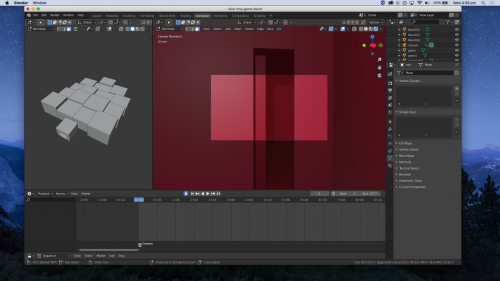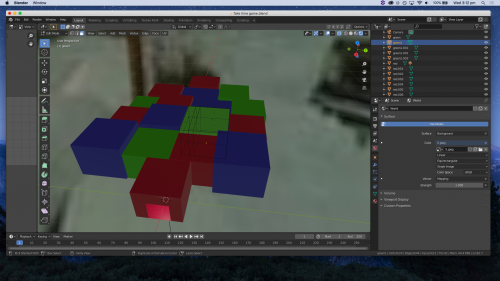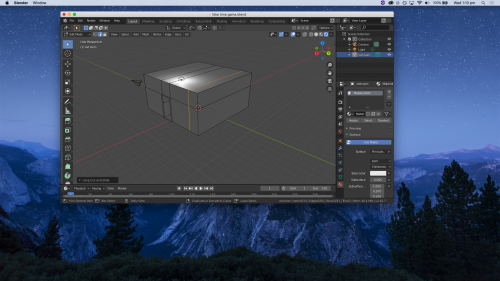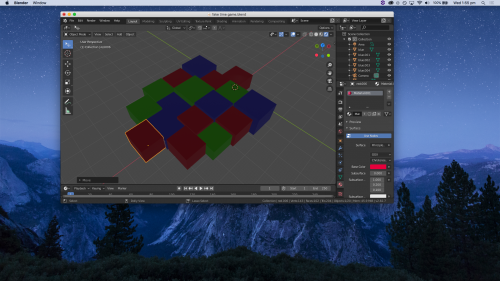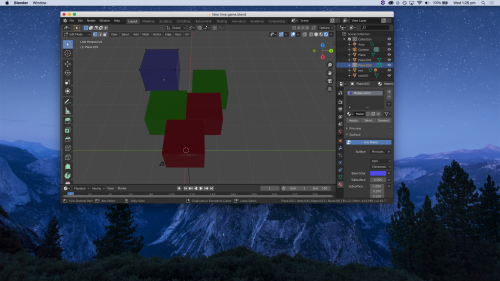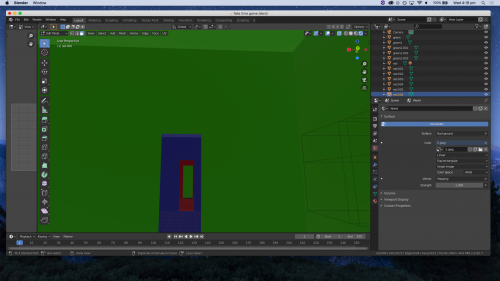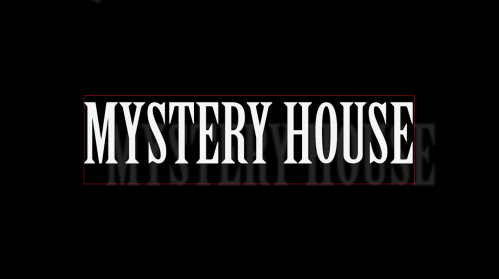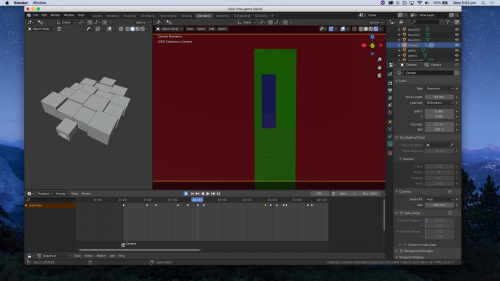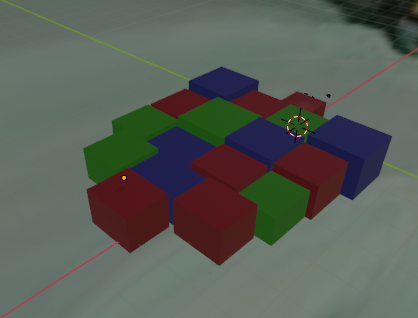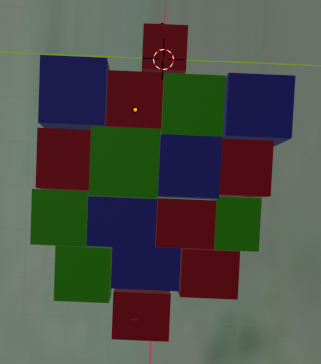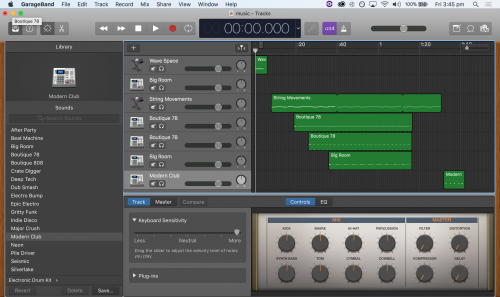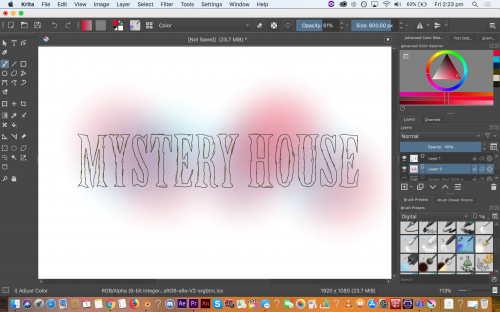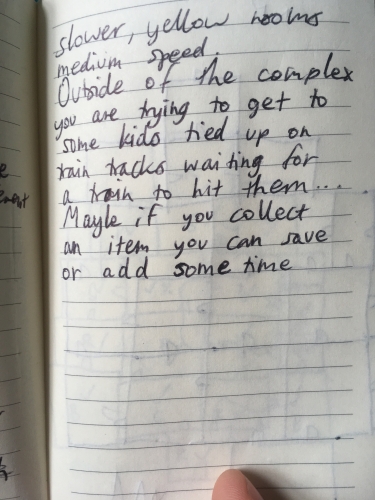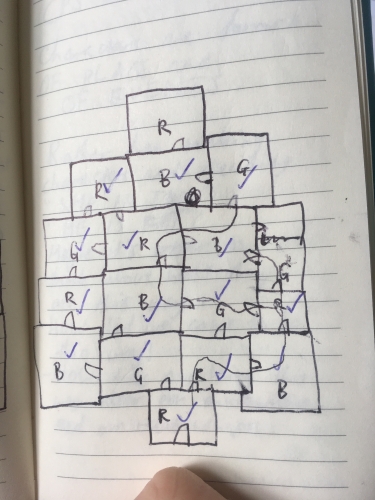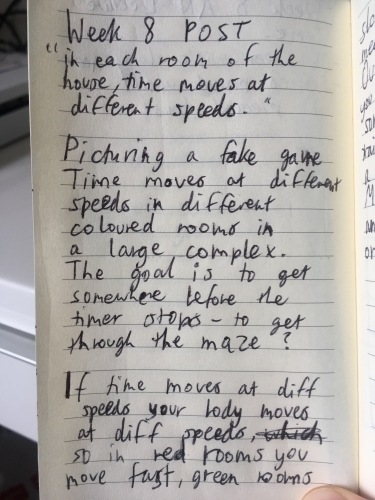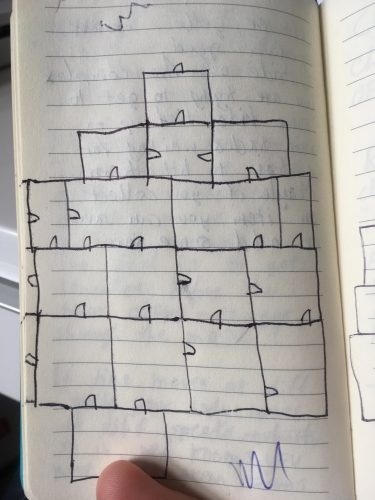This week I worked off the premise that I created: "In each room of the house, time moves at different speeds."
From a group exercise we did in class a few weeks ago, I knew it was sort of possible to make a representation of a game without actually making the game itself. Then when I was watching the related works in the lecture video, I came across a video on Youtube of the game Florence. I watch a lot of video games on Youtube and I had a lightbulb moment where I realised I could make a video representation of the game outlined in my premise.
This turned out to be a fun way to combine my very basic Blender skills with my more advanced motion graphics and filmmaking knowledge in order to make a whole video.
The premise of the game is very simple- you move through a complex mansion to find your way to the end. The mansion is made of many rooms which are either red, blue, or green. In blue rooms, the countdown timer speeds up and in green rooms, your body slows down. Admittedly, this is not a very interesting mechanic, I know, but hey, it's my first (fake) game.
The first proper challenge once I'd built the structure was to animate the camera in Blender. I ended up getting this to work to some extent, though it's not quite as smooth as I would have liked. Something to work on.
Unfortunately for all my hard work, the video still looked extremely basic and boring and I really wanted to do something to enhance it. In one of this week's readings by Ian Bogost, an article "Video Games Are Better Without Stories" for The Atlantic, I read about environmental storytelling in games and thought a lot about Bioshock, a game I played a few years ago. In Bioshock, you enter an underwater former utopia, a world built by a once extremely powerful society where something has very clearly gone wrong. You only know all this information by walking around the 3D world- as Bogost says, environmental stories "invite players to discover and reconstruct a fixed story from the environment itself". This made me realise that my very simple "game" might also be viewed in this way by an audience, and I added some creepy music and a very ambiguous introductory video in order to set the scene.
I'm pretty happy with the final product and it is indeed the first thing I've made in MAGI that I've wanted to show my friends. It is definitely in similar to other work I've made in the past where I make "fake" versions of things, which I think stems from my interest in alternative history and sci-fi. For example, I once made a "fake" concert DVD. I can definitely envision creating some fake games all made by a fake game designer in order to tell a story about the designer.
With this in mind, I think I should get started making more interest looking fake games (until I learn how to make games) with better game mechanics.
About This Work
By Harry Hughes
Email Harry Hughes
Published On: 04/05/2020

